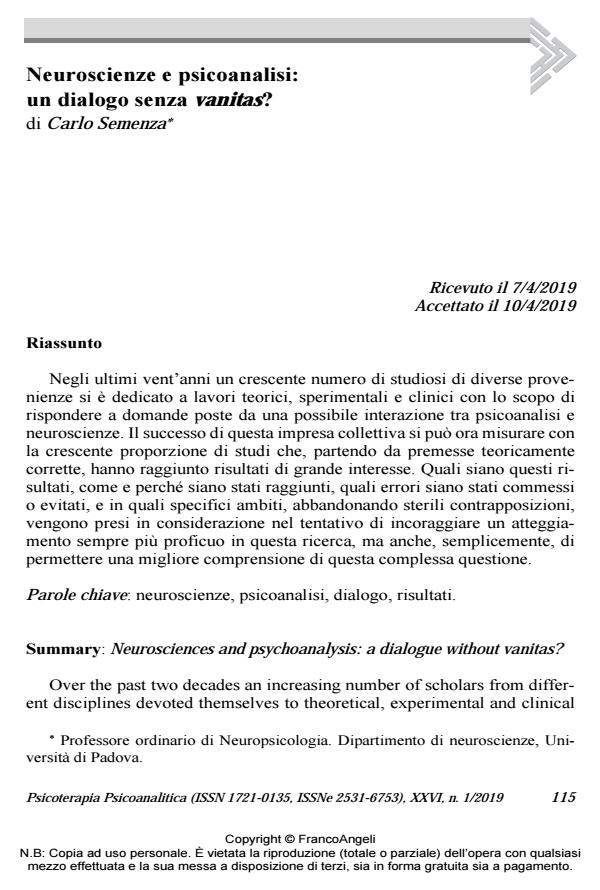Neuroscienze e psicoanalisi: un dialogo senza vanitas?
Titolo Rivista PSICOTERAPIA PSICOANALITICA
Autori/Curatori Carlo Semenza
Anno di pubblicazione 2019 Fascicolo 2019/1
Lingua Italiano Numero pagine 13 P. 115-127 Dimensione file 183 KB
DOI 10.3280/PSP2019-001008
Il DOI è il codice a barre della proprietà intellettuale: per saperne di più
clicca qui
Qui sotto puoi vedere in anteprima la prima pagina di questo articolo.
Se questo articolo ti interessa, lo puoi acquistare (e scaricare in formato pdf) seguendo le facili indicazioni per acquistare il download credit. Acquista Download Credits per scaricare questo Articolo in formato PDF

FrancoAngeli è membro della Publishers International Linking Association, Inc (PILA)associazione indipendente e non profit per facilitare (attraverso i servizi tecnologici implementati da CrossRef.org) l’accesso degli studiosi ai contenuti digitali nelle pubblicazioni professionali e scientifiche
Negli ultimi vent’anni un crescente numero di studiosi di diverse provenienze si è dedicato a lavori teorici, sperimentali e clinici con lo scopo di rispondere a domande poste da una possibile interazione tra psicoanalisi e neuroscienze. Il successo di questa impresa collettiva si può ora misurare con la crescente proporzione di studi che, partendo da premesse teoricamente corrette, hanno raggiunto risultati di grande interesse. Quali siano questi risultati, come e perché siano stati raggiun-ti, quali errori siano stati commessi o evitati, e in quali specifici ambiti, abbandonando sterili contrapposizioni, vengono presi in considerazio-ne nel tentativo di incoraggiare un atteggiamento sempre più proficuo in questa ricerca, ma anche, semplicemente, di permettere una migliore comprensione di questa complessa questione.
Parole chiave:Neuroscienze, psicoanalisi, dialogo, risultati
Carlo Semenza, Neuroscienze e psicoanalisi: un dialogo senza vanitas? in "PSICOTERAPIA PSICOANALITICA" 1/2019, pp 115-127, DOI: 10.3280/PSP2019-001008